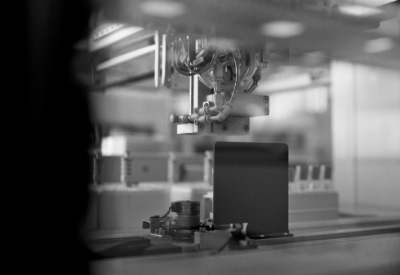December 2024 | Tips & Information
Preparing NASA for the Future: Key Insights From the National Academies Report
NASA stands at a pivotal moment in its long and accomplished history. The National Academies report, NASA at a Crossroads: Maintaining Workforce, Infrastructure, and Technology Preeminence in the Coming Decades, outlines a strategic blueprint to ensure that NASA remains a leader in space exploration, science, and aeronautics.
The 200+ page report highlights urgent needs and opportunities across three main pillars:
- Workforce
- Infrastructure
- Technology development
The report outlines key areas that must be strengthened to secure NASA’s ability to meet the challenges of the next few decades.
Building a Future-Ready Workforce
One of the most significant takeaways from the report is the critical importance of a skilled and dynamic workforce. NASA has long been a magnet for top-tier talent in science, technology, engineering, and mathematics (STEM). However, the report notes growing challenges in attracting and retaining these professionals, especially as competition with the private sector intensifies. A highly skilled workforce is the backbone of NASA’s ability to carry out complex missions, from human spaceflight to robotic exploration and cutting-edge scientific research.
The report emphasizes that NASA must not only sustain but also enhance hands-on training and mentorship programs. Investments in education, professional development, and workforce diversity are crucial. In particular, NASA’s ability to inspire and engage the next generation in solving space-related challenges will determine the agency’s future success.
Upgrading and Modernizing Infrastructure
NASA’s infrastructure is another area of concern. The report reveals that much of NASA’s physical infrastructure—from testing facilities to communication networks— is aging and overdue for critical maintenance.
Approximately 83% of NASA’s facilities are past their design life, threatening to hamper operations and research efforts. Modernizing this infrastructure is imperative to maintaining a robust support system for future missions, especially as the complexity of these missions continues to grow.
Additionally, deferred maintenance and cumbersome administrative processes exacerbate these challenges. The report suggests establishing a streamlined, proactive approach to facility upgrades and maintenance. Solutions like working capital funds could enable more responsive and strategic management of NASA’s physical assets, helping to prevent disruptions to mission-critical work.
Pioneering Transformational Technology Development
Technological innovation has always been the essence of NASA’s mission. Yet, the report warns that insufficient investment in early-stage research and technology development could hinder future breakthroughs. NASA needs to advance transformative technologies—from in-space propulsion to advanced robotics and life-support systems—to meet its ambitious goals, such as sustainable lunar exploration and eventual human missions to Mars.
The report recommends a balanced approach: one that embraces development risk in research while minimizing operational risk during mission execution. This requires prioritizing research and technology funding and developing clear, agency-wide technology roadmaps to meet mission needs. Investment in foundational science and engineering research and robust partnerships with academia and industry will be crucial.
Balancing Immediate and Long-Term Goals
One of the recurring themes in the report is the tension between short-term demands and long-term strategic needs. NASA has often been pressured to prioritize immediate mission work, sometimes at the expense of maintaining a strong foundational base. The report calls for rebalancing resources to ensure that workforce, infrastructure, and technology investments are not sacrificed for near-term gains. Such a strategic realignment will safeguard NASA’s ability to remain a leader in innovation and exploration.
A Call for Integrated and Strategic Planning
The report underscores the need for integrated, long-range planning that aligns workforce, infrastructure, and technology development with NASA’s future mission demands. A comprehensive and regularly updated roadmap could guide resource allocation and decision-making, ensuring that NASA is prepared to achieve its bold vision for the future.
City Labs: Partnering With NASA in Innovation and Excellence
At City Labs, we are proud to contribute to the technological advancements that NASA needs for its future missions. Our continuing research in NanoTritium™ technology has garnered significant interest from NASA, providing a reliable and long-lasting power source for spacecraft and autonomous sensors operating in extreme environments.
Projects like our Autonomous Tritium Micropowered Sensors are crucial for missions where traditional power sources fail, while our development of innovative tritium batteries has the potential to transform how long-duration space missions are powered.
These collaborations have been mutually beneficial: NASA has supported and provided a platform for deploying groundbreaking energy solutions, and City Labs has had the opportunity to work at the cutting edge of space technology, pushing City Labs’ nuclear batteries to new heights.
As we look to the future, we remain committed to partnering with NASA and advancing infrastructure, workforce, and technology solutions that align with the National Academies’ vision for a stronger, more capable space agency in partnership with industry leaders. Together, we are excited to support the exploration and discovery that will define the next era of space science and exploration.
If you’re interested in joining us in our effort, we welcome you to contact us today.









